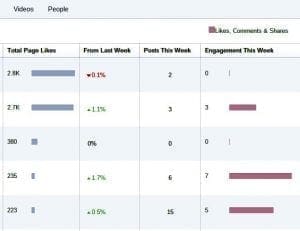The impending Holiday season is upon us. Is your business ready to compete for your consumers attention? A recent article from Google noted that Holiday shopping, advertising research, and purchasing begins to see more and more upwards momentum beginning in August. Mothers, Fathers, and Brother-in-Laws all alike are searching for “Christmas ideas” and “meaningful gifts.” With this ever changing and growing capitalistic world at our fingertips, how can your business hold your customer’s attention and gain sales?
1. Including Local information in Search can drive Store Visits
Whether your business is a Mom-and-Pop shop or a chain store of equally desired products/services, your store information and details regarding those products and services are crucial. A recent Google Study found that 75% of customers are searching for the prices of your products, 66% are searching for the location of the closest store carrying their item of interest, and 63% are searching for your hours of operation, phone number, etc. These critical elements are high priority to Holiday shopping advertising, and all play a role in a consumer’s readiness to buy and likeliness to choose your company.
2. Over 50% of Shoppers will go to a Brand’s website to look for Coupons
“Best Price Guaranteed”, “Lowest Price around”, “Competitor Coupons Accepted” – all phrases your customers are hearing from your competitors. Keeping up to date coupons readily available for your buyer can change their “I want” ’s to “I need” ’s. This recent infographic by Adweek details more of shopper’s wants. Offering exclusive or custom coupons is also a habit that leaves your shopper feeling special and more likely to come again. These coupons, coupon codes, and premium offers can be advertised around the globe easily by Television, Email, Newspaper(s), Print Mail, on your Website, and more. Don’t let your customer find a better deal while shopping during this holiday season.

3. 90% of users use Screens simultaneously to Accomplish a Task
Your next customer can be on their phone, tablet, desktop, or laptop, searching for your products and services. Can they find you? Can your website fit a tablet, cell phone, or desktop screen quickly and seamlessly? When April’s Mobilegeddon was fast approaching, Mobile-Friendliness was top of mind and high priority. A user’s experience across all devices should be top of mind and crucial to your website’s design. Advertising your products and services within an environment that can be easily compressed and expanded to become compatible with your customer’s screen is highly beneficial when optimizing for the upcoming Holiday shopping advertising season. This Mobile Search study, The New Multi-screen World, details more pertinent facts such as 67% of users use multiple screens for their online shopping needs.
4. Last Year, 40% of Holiday Shopping Occurred Online
Google’s Recent Study “5 Holiday Shopping Trends to Watch in 2015” detailed the differences we’ve seen with shopper’s online presence and intent to stay there. 41% of shoppers purchased from a new retailer, which is a significant jump from 2013. Your company’s online presence should be relevant and engaging to appeal to all shoppers. Creating a marketing strategy to outline your company’s “plan of attack” to grab your future customer’s attention is key.
5. 22% of consumers feel most influenced by Emails sent directly from a Brand
Email marketing has become second nature for advertising and marketing initiatives. Simple online Customer Relationship Management (CRM) tools such as MyEmma.com and SalesForce.com allow businesses to not only create email marketing initiatives, but also connect to and keep track of prospects and important customer relationships that may otherwise be left behind. Emails sent to customers may detail upcoming events, sales, coupons, etc. that your retail business may be offering. Holiday themed emails, company “Christmas Cards”, and special Holiday savings are key holiday email marketing strategies to plan for.
Holiday Shopping Advertising Recap
In conclusion, digital marketing efforts during the holiday season are essential for Ecommerce/Retail businesses. Assuring that your company’s local information is up-to-date will lead to more in-store purchases. Offering coupons to within your company’s website will in turn create a unique user experience for your customers. Guaranteeing that your business’ website is easily adjustable for various screen resolutions and devices sizes will lead to a better user experience, and in turn, higher ROI. Your company’s plan of attack should address your business’ online presence and how to engage more frequently with consumers. Email marketing utilizing CRM’s allow customers to gain a feel for your brand and offerings with personalized messages that may lead to more inquiries and more purchases. Creating a sound strategy to encompass these Holiday shopping advertising thought-provoking statistics and facts, may lead to a better brand and better customer experience alike.




